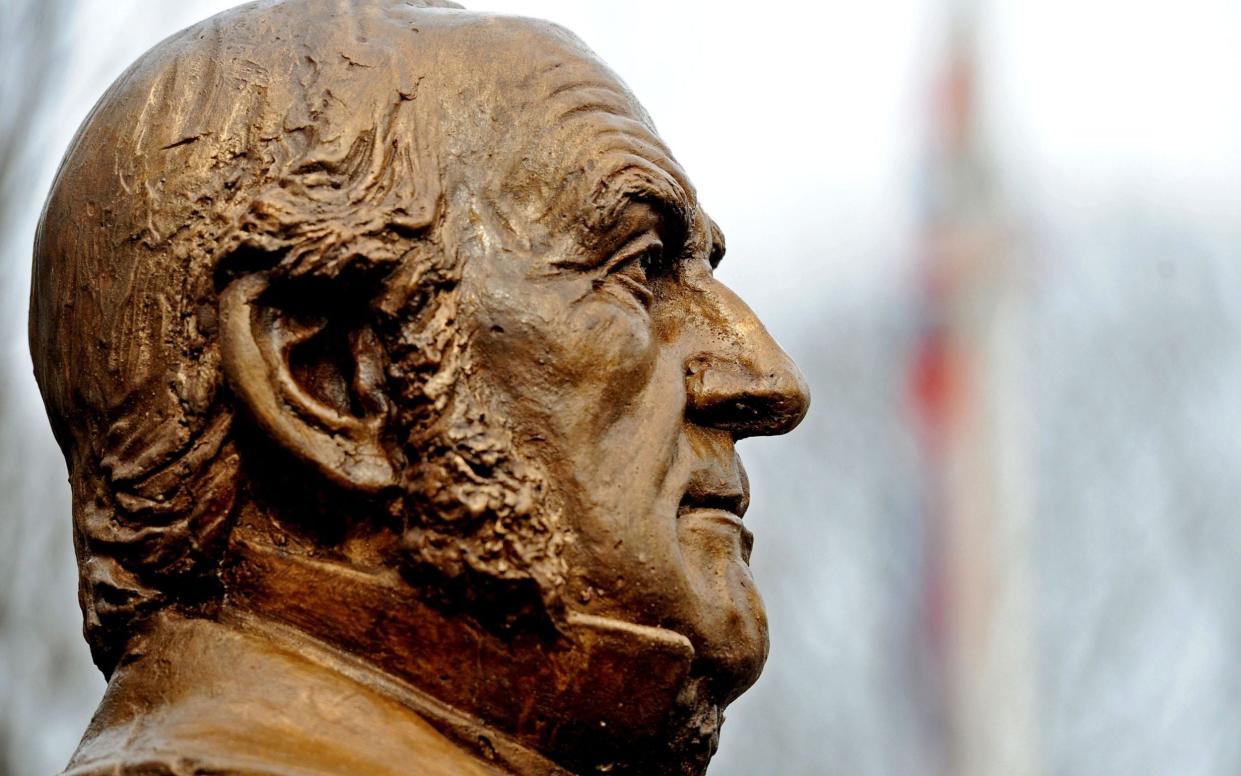William Gladstone statue hidden from public amid slave trade link concerns

- Oops!Something went wrong.Please try again later.
William Gladstone’s statue has been hidden from view by a church as debate continues over its “suitability” in the wake of the former prime minister’s links to the slave trade.
His bronze bust was erected in 2013 outside the Our Lady Star of the Sea Church in Seaforth, Merseyside, where he spent his youth. However, this hometown honour has been quietly removed.
Gladstone’s figure has been placed in storage and remains hidden from public view, with church authorities debating its future after questions were asked about its “suitability”.
Following the 2020 Black Lives Matter protests, there were calls for statues of the four-time prime minister across the UK to be taken down because Sir John Gladstone, his merchant father, owned slaves in the Caribbean.
The parish priest and Archdiocese of Liverpool decided to take down the bust that year, and have told The Telegraph this was done to protect the structure from anti-social behaviour rather than after pressure from protesters.
However, church authorities have said that “questions have been asked about the suitability of such a statue”, which appears set to remain in storage as “no decision has yet been taken as to its long-term future”.

The statue is among those linked to slavery to have been removed, including Edward Colston and Robert Milligan, who actually owned slaves.
The Gladstone bust was unveiled in 2013 to mark the bicentenary of his birth following a lengthy campaign by Brenda Murray, the late Merseyside historian who was determined to publicise his links to the Seaforth area. A £10,000 grant from the National Lottery Heritage Fund helped pay for the project.
The site was chosen as it was once the site of a church beloved by Gladstone, who grew up in the nearby Seaforth House, a mansion built by his father which has since been demolished.
Sir John owned large sugar plantations in Jamaica and Demerara, a former region of South America, which made use of slave labour. When slavery was abolished in 1833, he was compensated for the loss.
However, the former prime minister went on to oppose slavery and brand it the “foulest crime” in history. He is widely considered to have been a great reformer and one of Britain’s greatest political leaders.
Following the Black Lives Matter protests, which sparked a nationwide reassessment of historical figures and their links to slavery, this source of family wealth and early political campaigning in favour of their compensation have left Gladstone mired in controversy.

His legacy has prompted calls to reinstate the bust.
Robert Poll, the founder of the Save our Statues campaign group, said: “Here we have a four-time prime minister, with a 60-year career in Parliament, reduced to yet another one-dimensional ‘baddie’ from Britain’s supposedly evil past.
“This blinkered focus is a dangerous way to study the past that has more to do with politics than history.
“Today’s self-righteous ideologues have created an atmosphere of fear that’s left this bust in limbo, imprisoned indefinitely without charge. Habeas corpus offers no protection to the statues of our forebears.”
A spokesman for the Archdiocese of Liverpool said: “The bust of Gladstone, which was outside the Church of Our Lady Star of the Sea, Seaforth, was removed to safe storage following consultation between the Parish Priest and the archdiocesan surveyors due to numerous incidents of anti-social behaviour around the Church grounds.”
The spokesman said that the statue was not affected by this at the time, but did require some unrelated repairs, adding: “Questions have been asked about the suitability of such a statue. However, no decision has yet been taken as to its long-term future.
“It was purely a church decision and whilst the appropriateness of the statue has since been questioned, it was felt at the time that the best thing for the safety of the statue was to have it carefully removed and put into safe storage.”

